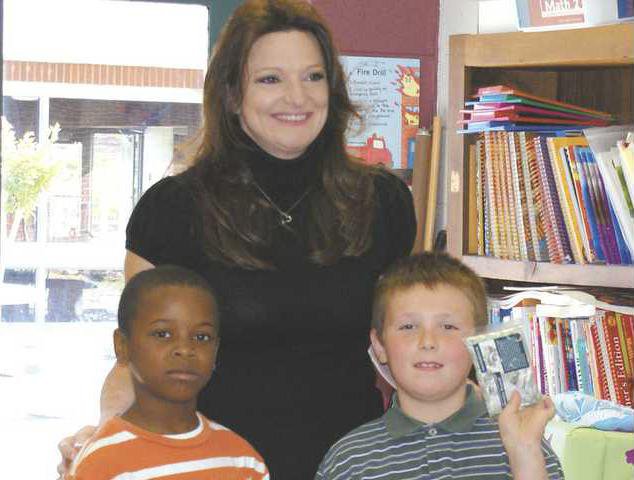For nearly a decade, a team of volunteers from Sea Island Bank has partnered with local public and private schools to teach children about money management, the importance of saving and the key role a budget plays in lifelong financial planning.
Throughout the months of April and May, the local bankers make their rounds to second grade classrooms, providing an interactive financial education and savings presentation.
"Sea Island Bank participates in an annual nationwide effort to help address these topics through the American Bankers Association's Teach Children to Save Program," said Kim Brannen, a vice president of Sea Island Bank and manager of the bank's Private Client Group. "While many of today's kids can receive e-mail through their cell phones, or use the Internet to do homework, many really don't understand the basics of saving and money management."
Research indicates that people who learn to save early in life usually make smarter financial decisions later.
"This program shows kids the right path to follow when it comes to saving for their future," Brannen said.
While children are usually intrigued with money, it still requires a special effort by the bankers to gain their attention and keep them engaged throughout the presentation.
"This is when the fun really begins and we can interact on a personal level with the children," said Debra Standridge-Spillman, a vice president at Sea Island and manager of the bank's Fair Road office, when recalling one of her many visits to local schools. "We play a neat savings and purchasing game, allowing students to spend up to a quarter in nickels on some special treats. This helps us instruct them on the importance of careful financial planning and budgeting. It really works."
The game hones in on topics such as budgeting, the difference between needs and wants, why it's important to save for emergencies and how interest makes money grow. Students learn the concepts with their hands-on activity.
"It is a wonderful learning moment when the children realize that some classmates are out of money, with desirable items still remaining for purchase," Brannen said. "They look around at each other and see the better opportunities available to the 'savers' as opposed to the early 'spenders.' The additional interest the savers earn makes the lesson even more significant."
She said there is always much discussion, comparison and chatter among the children, as they observe the different outcomes from a variety of decisions. Because the toys are desirable enough to engage the students, but not so desirable that they cause any significant disappointment, the learning is meaningful without being upsetting.
Brannen said the savings game is a good simulation of real life experiences in money management.
"When some children are better able to afford purchases than others, it gives the others new insight into how savers put themselves in a better position to take advantage of life's opportunities," she said.
The Teach Children to Save curriculum also assists educators in meeting national standards in mathematics, English and consumer sciences. The program specifically addresses the Georgia Performance Standards for second grade economics.
"This is a wonderful program which illustrates the importance of managing your money wisely," said Ruby Ashley, director of Project SENSE and Project BEST, school outreach programs supported by a three-way partnership between the State of Georgia, Georgia Southern University and local school systems.
"It is extremely helpful to teachers because it helps their students address important issues like personal spending and savings while teaching young people valuable lessons in money management," she said.
For more information, teachers or parents may contact Brannen at (912) 489-9276, or log on to the American Bankers Association's web site at www.aba.com for tips and ideas about financial management and saving money.

